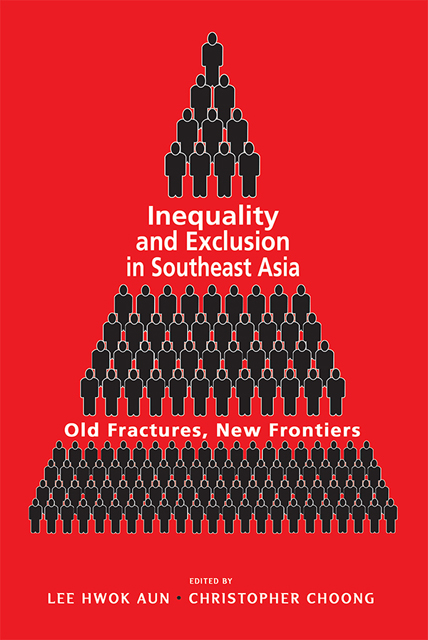Book contents
- Frontmatter
- Contents
- List of Tables
- List of Figures
- Acknowledgements
- About the Contributors
- 1 Introduction: Inequality and Exclusion in Southeast Asia
- 2 Cambodia’s Experiences in Addressing Inequality
- 3 Inequality and Exclusion in Post-Soeharto Indonesia
- 4 Inequality and Exclusion in Malaysia: Macro Trends, Labour Market Dynamics and Gender Dimensions
- 5 Inequality in Myanmar: Structural Change, Policy Outcomes and Gender Dimensions
- 6 Structural Inequality in the Philippines: Oligarchy, Economic Transformation and Current Challenges to Development
- 7 Inequality and the Social Compact in Singapore: Macro Trends vs Lived Inequalities
- 8 Inequality in Thailand: Income, Socio-economic and Wealth Dimensions
- 9 Trends and Drivers of Inequality in Vietnam
- 10 Conclusion: Old Fractures and New Frontiers
- Index
8 - Inequality in Thailand: Income, Socio-economic and Wealth Dimensions
Published online by Cambridge University Press: 01 September 2023
- Frontmatter
- Contents
- List of Tables
- List of Figures
- Acknowledgements
- About the Contributors
- 1 Introduction: Inequality and Exclusion in Southeast Asia
- 2 Cambodia’s Experiences in Addressing Inequality
- 3 Inequality and Exclusion in Post-Soeharto Indonesia
- 4 Inequality and Exclusion in Malaysia: Macro Trends, Labour Market Dynamics and Gender Dimensions
- 5 Inequality in Myanmar: Structural Change, Policy Outcomes and Gender Dimensions
- 6 Structural Inequality in the Philippines: Oligarchy, Economic Transformation and Current Challenges to Development
- 7 Inequality and the Social Compact in Singapore: Macro Trends vs Lived Inequalities
- 8 Inequality in Thailand: Income, Socio-economic and Wealth Dimensions
- 9 Trends and Drivers of Inequality in Vietnam
- 10 Conclusion: Old Fractures and New Frontiers
- Index
Summary
INTRODUCTION
In late 2018, Credit Suisse’s Global Wealth Report 2018 made headlines in Thai media after a well-known financier publicized the report’s key findings on his Facebook page. The post subsequently became viral as his followers and the media shared it to wider audiences. The report placed Thailand among the most unequal countries in the world, thanks to a wealth concentration in a tiny fraction of wealthy families. This finding dealt a heavy blow to the junta-established government since it showed that inequality has worsened since the coup d’état of 2014. The report estimated that the top 1 per cent of population owns a staggering 66.9 per cent or two-thirds of total wealth in Thailand. This figure is up from the 2016 report which estimated that the richest 1 per cent held 58 per cent of the country’s wealth. As a result, Thailand ranked in the top four of the world most unequal countries in terms of wealth distribution.
The report was quickly dismissed by the government, which argued that the wealth concentration indicators were estimated from inaccurate and outdated data. The government officials went further to claim that the current income distribution is much improved from the past. Meanwhile, the National Economic and Social Development Council (NESDC), a government think-tank, stepped forward to lend supporting evidence of reduced income and consumption inequality over the past years.
The debate between the government and its critics subsided as time passed but whether Thailand has become a more unequal nation remains a resonating question. Critics point to signs of wealth concentration, while the government rallies to its defence indicators of improved income and consumption distribution. Both sides need to be critically examined, but it is also possible that there is actually no conflict; opposing trends in wealth and income inequality can coexist. Underdeclaration of wealth-based income in household income and expenditure surveys, from which we derive income and consumption inequality, undercounts wealth ownership. Educational advancement and policy interventions such as minimum wage may foster reduced wage and income inequality, even while wealth concentration at the top increases.
This chapter unpacks the multiple facets of inequality, and engages with the debate.
- Type
- Chapter
- Information
- Inequality and Exclusion in Southeast AsiaOld Fractures, New Frontiers, pp. 261 - 294Publisher: ISEAS–Yusof Ishak InstituteFirst published in: 2023



